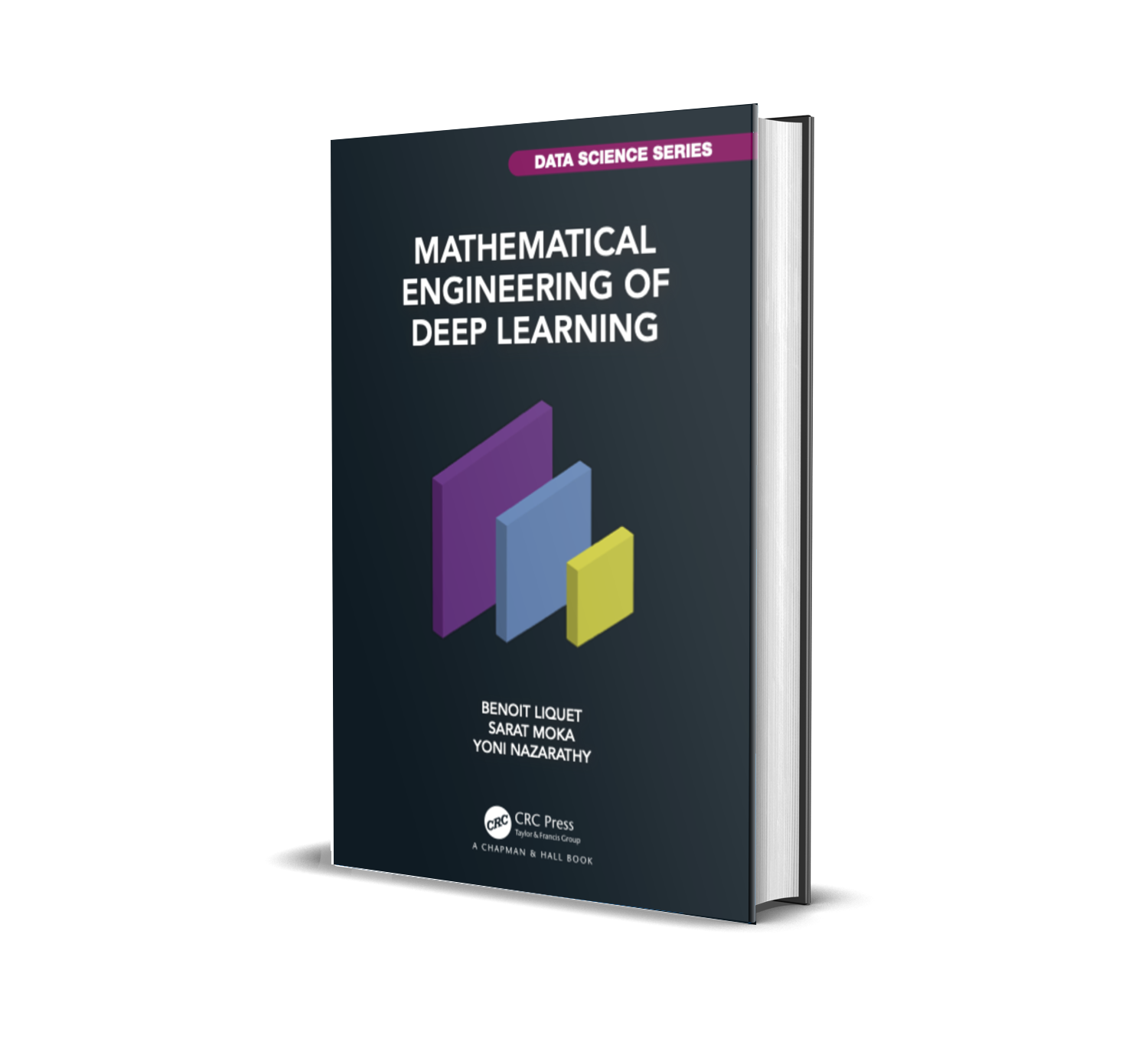Mathematical Engineering
of Deep Learning


Synopsis: This book provides a complete and concise overview of the mathematical engineering of deep learning. In addition to overviewing deep learning foundations, the treatment includes convolutional neural networks, recurrent neural networks, transformers, generative adversarial networks, diffusion models, reinforcement learning, graphical neural networks, and multiple tricks of the trade.
The focus is on the basic mathematical description of deep learning models, algorithms and methods. The presentation is mostly agnostic to computer code, neuroscientific relationships, historical perspectives, and theoretical research. The benefit of such an approach is that a mathematically equipped reader can quickly grasp the essence of modern deep learning algorithms, models, and techniques without having to look at computer code, neuroscience, or the historical progression.
Deep learning is easily described through the language of mathematics at a level accessible to many professionals. Readers from the fields of engineering, signal processing, statistics, physics, pure mathematics, econometrics, operations research, quantitative management, applied machine learning, or applied deep learning will quickly gain insights into the key mathematical engineering components of the field.
Draft book (Feb 28, 2024):
Mathematical background:
Abstract: We present a gentle introduction to elementary mathematical notation with the focus of communicating deep learning principles. This is a math crash course aimed at quickly enabling scientists with understanding of the building blocks used in many equations, formulas, and algorithms that describe deep learning. While this short presentation cannot replace solid mathematical knowledge that needs multiple courses and years to solidify, our aim is to allow non-mathematical readers to overcome hurdles of reading texts that also use such mathematical notation. We describe a few basic deep learning models using mathematical notation before we unpack the meaning of the notation. In particular, this text includes an informal introduction to summations, sets, functions, vectors, matrices, gradients, and a few more objects that are often used to describe deep learning. While this is a mathematical crash course, our presentation is kept in the context of deep learning and machine learning models including the sigmoid model, the softmax model, and fully connected feedforward deep neural networks. We also hint at basic mathematical objects appearing in neural networks for images and text data.
Source code:
Cite:
@book{LiquetMokaNazarathy2024DeepLearning,
title = {Mathematical Engineering of Deep Learning},
author = {Benoit Liquet and Sarat Moka and Yoni Nazarathy},
publisher = {CRC Press},
year = {2024}
}
Related courses and workshops: